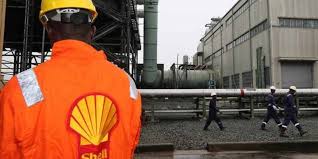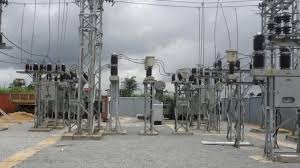Oil & Energy
Gov Sule Makes Case For Nation’s Gas Reserves
Nasarawa state Governor Abdullahi Sule said last Thursday that the country’s major challenges and problems could be resolved with its gas reserves.
Sule said this in Abuja at the 6th Triennial Branch Delegates Conference/Award of the Department of Petroleum Resources (DPR), Petroleum and Natural Gas Senior Staff Association of Nigeria (PENGASSAN), under the theme: “Petroleum Industry Act (PIA) – Prospects for the Nigerian oil and gas industry”.
The governor said Nigeria was a gas country with oil, going by the volume of her gas reserves.
“When I was working for an oil and gas company in the past, we used to categorise Nigeria as among the various nations of oil and gas, we used to see Nigeria as a gas country with oil.
“With over 200 trillion standard cubic feet of gas that we have, Nigeria is indeed a gas country. And for those who understand the industry, if we develop the gas alone, even without the 40 million barrels of oil we have, the gas will be enough to sustain Nigeria.
“All the problems about power, fertiliser, the challenges we have in agriculture will be resolved easily with the gas reserve that we have.
“I want PENGASSAN to promote gas because a lot of countries survived with gas; it’s gas that made Qatar what it is today, not oil.
“So, this is the opportunity we have that we must develop, if we have to survive as a nation,” Sule said.
Chief Executive Officer (CEO), Mr Sarki Auwalu, (DPR), who was the chief host of the conference, said the focus on the PIA was to highlight the importance of the law to the oil and gas sector.
Auwalu also said that PIA would overhaul the oil and gas industry and eventually set the country on the path of greatness.
“The theme of this conference is a further testament to the critical role played by the constructive unionism in national development, the petroleum industry in particular.
“You will agree with me that President Muhammadu Buhari achieved a monumental feat in advancing the Nigeria oil and gas industry.
“This was enabled through the signing of the PIB into an Act and this took us 20 years to achieve this legacy; president Buhari deserves an applause.
“In spite of the fact that we are going to net-zero, I believe that the PIA has a focus on the future and we will see how that future will be guaranteed with respect to environmental consciousness.
“I believe that the PIA will guarantee the future of our children and grand children,” Auwalu said.
He called for closer collaboration between PENGASSAN and the DPR, especially as it concerned the implementation of the PIA, for the oil and gas industry to continue to thrive.
President of PENGASSAN, Mr Festus Osifo regretted that the PIB was signed into law by President Buhari with some errors, but noted that it could be subjected to amendments for some of the errors to be removed.
“The only snag we have today is that we channel our energy into production of crude oil reserve; if we continue the way we are today, that is 2 million barrels per day and about 37 million barrels reserve, it will take us years to move forward.
“We should be thinking of how to fast track to ensure that the 2 million production is moved to 3 or 4 million barrels.
“If we don’t do that quickly, we are going to be caught in the trap of energy transition or fall into the web of what happened to our coal. Today, coal is trapped in the ground and nobody is interested”, he said.
Oil & Energy
Nigeria Loses More Crude Oil Than Some OPEC Members – Nwoko

Nigeria’s losses due to crude oil theft has been said to be more significant than those of some other members of the Organisation of Petroleum Exporting Countries(OPEC).
The Chairman, Senate Ad- hoc Committee on Crude Oil Theft, Senator Ned Nwoko, made this known in an interview with newsmen in Abuja.
Nwoko noted with dismay the detrimental impact of the issue, which, he said include economic damage, environmental destruction, and its impact on host communities.
According to him, the theft was not only weakening the Naira, but also depriving the nation of vital revenue needed for infrastructure, healthcare, education and social development.
The Senator representing Delta North Senatorial District described the scale of the theft as staggering, with reports indicating losses of over 200,000 barrels per day.
Nwoko disclosed that the ad hoc committee on Crude Oil Theft, which he chairs, recently had a two-day public hearing on the rampant theft of crude oil through illegal bunkering, pipeline vandalism, and the systemic gaps in the regulation and surveillance of the nation’s petroleum resources.
According to him, the public hearing was a pivotal step in addressing one of the most pressing challenges facing the nation.
‘’Nigeria loses billions of dollars annually to crude oil theft. This is severely undermining our economy, weakening the Naira and depriving the nation of vital revenue needed for infrastructure, healthcare, education, and social development.
‘’The scale of this theft is staggering, with reports indicating losses of over 200,000 barrels per day more than some OPEC member nations produce.
‘’This criminal enterprise fuels corruption, funds illegal activities and devastates our environment through spills and pollution.
‘’The public hearing was not just another talk shop; it was a decisive platform to uncover the root causes of crude oil theft, bunkering and pipeline vandalism.
‘’It was a platform to evaluate the effectiveness of existing surveillance, monitoring, and enforcement mechanisms; Identify regulatory and legislative gaps that enable these crimes to thrive.
‘’It was also to engage stakeholders, security agencies, host communities, oil companies, regulators, and experts to proffer actionable solutions; and strengthen legal frameworks to ensure stricter penalties and more efficient prosecution of offenders”, he said.
Nwoko noted that Nigeria’s survival depended
Oil & Energy
Tap Into Offshore Oil, Gas Opportunities, SNEPCO Urges Companies

Shell Nigeria Exploration and Production Company Ltd. (SNEPCo) has called on Nigerian companies to position themselves strategically to take full advantage of the growing opportunities in upcoming offshore and shallow water oil and gas projects.
The Managing Director, SNEPCO, Ronald Adams, made the call at the 5th Nigerian Oil and Gas Opportunity Fair (NOGOF) Conference, held in Yenagoa, Bayelsa State, last Thursday.
Adams highlighted the major projects, including Bonga Southwest Aparo, Bonga North, and the Bonga Main Life Extension, as key areas where Nigerian businesses can grow their capacity and increase their involvement.
“Shell Nigeria Exploration and Production Company Ltd. (SNEPCo) says Nigerian companies have a lot to benefit if they are prepared to take advantage of more opportunities in its offshore and shallow water oil and gas projects.
“Projects such as Bonga Southwest Aparo, Bonga North and Bonga Main Life Extension could grow Nigerian businesses and improve their expertise if they applied themselves seriously to executing higher value contracts”, Adams stated.
Adams noted that SNEPCo pioneered Nigeria’s deepwater oil exploration with the Bonga development and has since played a key role in growing local industry capacity.
He emphasized that Nigerian businesses could expand in key areas like logistics, drilling, and the construction of vital equipment such as subsea systems, mooring units, and gas processing facilities.
The SNEPCO boss explained that since production began at the Bonga field in 2005, SNEPCo has worked closely with Nigerian contractors to build systems and develop a skilled workforce capable of delivering projects safely, on time, and within budget both in Nigeria and across West Africa.
According to him, this long-term support has enabled local firms to take on key roles in managing the Bonga Floating, Production, Storage and Offloading (FPSO) vessel, which reached a major milestone by producing its one-billion barrel of oil on February 3, 2023.
Oil & Energy
Administrator Assures Community Of Improved Power Supply

The Emohua Local Government Area Administrator, Franklin Ajinwo, has pledged to improve electricity distribution in Oduoha Ogbakiri and its environs.
Ajinwo made the pledge recently while playing host in a courtesy visit to the Oduoha Ogbakiri Wezina Council of Chiefs, in his office in Rumuakunde.
He stated that arrangements are underway to enhance available power, reduce frequent outages, and promote steady electricity supply.
The move, he said, was aimed at boosting small and medium-scale businesses in the area.
“The essence of power is not just to have light at night. It’s for those who can use it to enhance their businesses”, he said.
The Administrator, who commended the peaceful nature of Ogbakiri people, urged the Chiefs to continue in promoting peace and stability, saying “meaningful development can only thrive in a peaceful environment”.
He also charged the Chiefs to protect existing infrastructure while promising to address the challenges faced by the community.
Earlier, the Oduoha Ogbakiri Wezina Council of Chiefs, led by HRH Eze Goodluck Mekwa Eleni Ekenta XV, expressed gratitude to the Administrator over his appointment and pledged their support to his administration.
The chiefs highlighted challenges facing the community to include incessant power outage, need for new transformers, and the completion of Community Secondary School, Oduoha.
The visit underscored the community’s expectations from the LGA administration.
With Ajinwo’s assurance of enhancing electricity distribution and promoting development, the people of Oduoha Ogbakiri said they look forward to a brighter future.
By: King Onunwor

